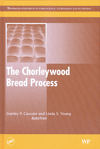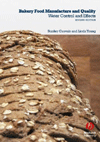Consumers are just beginning to recognize bread as a source of Vitamin D.
That’s according to an Angus Reid Survey conducted during the third week of September for Montreal-based Lallemand.
In recent years, bakers have started rolling out new bread products that boast they’re a source of Vitamin D on their packaging. However, only a small percentage of consumers currently recognize bread as a common source of Vitamin D, especially compared to other product groups.
In fact, only 10% of consumers perceive bread as a source of Vitamin D, according to the survey of 1,011 people across the United States. On the other hand, 72% of respondents associate Vitamin D with milk, followed by yogurt (38%), orange juice (24%) and cereal (19%).
The most important factors influencing consumer’s bread purchasing decisions (factors ranked either 1 through 5 by respondents) were taste (78%) and price (77%) followed by natural ingredients (53%) and fiber content (52%). This in turn is followed by ”good with other food” (39%), vitamin fortified (35%), low fat (30%) and low sodium (24%).
More than five times as many consumers say they would prefer to buy bread that is “naturally rich” in vitamins (56%) versus fortified (10%). More than half indicate that “natural ingredients” are one of the Top 5 factors influencing their purchasing decisions.
The most common health benefits that the respondents associate with Vitamin D are protection against osteoporosis and fracture risk (45%), cancer (19%), cardiovascular disease (18%), influenza (11%) and diabetes (10%).
Lallemand notes that it makes its bakers yeast a natural source of Vitamin D. Lallemand/American Yeast systematically converts part of the natural sterols in the yeast to Vitamin D by exposing its yeast to light, still allowing the yeast to keep its leavening and flavor contributions intact, according to the company.
For more information, go to www.lallemand.com.
Get our new eMagazine delivered to your inbox every month.
Stay in the know on the latest snack and bakery industry trends.
SUBSCRIBE TODAY!Copyright ©2024. All Rights Reserved BNP Media.
Design, CMS, Hosting & Web Development :: ePublishing



